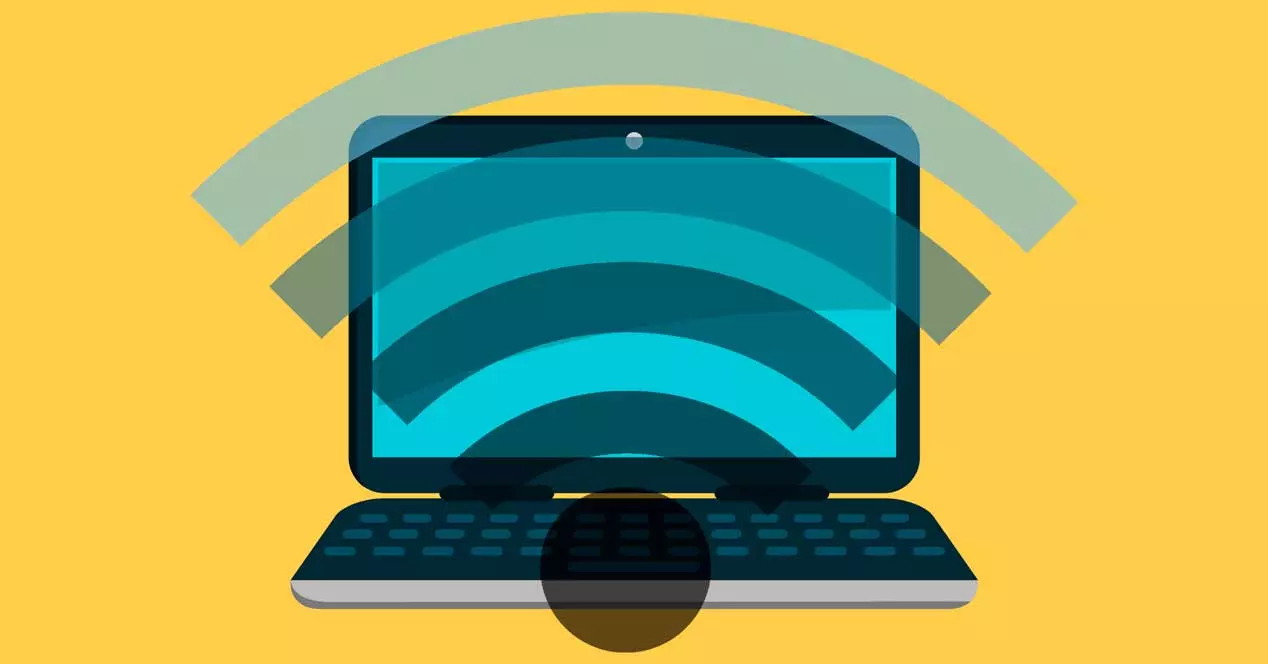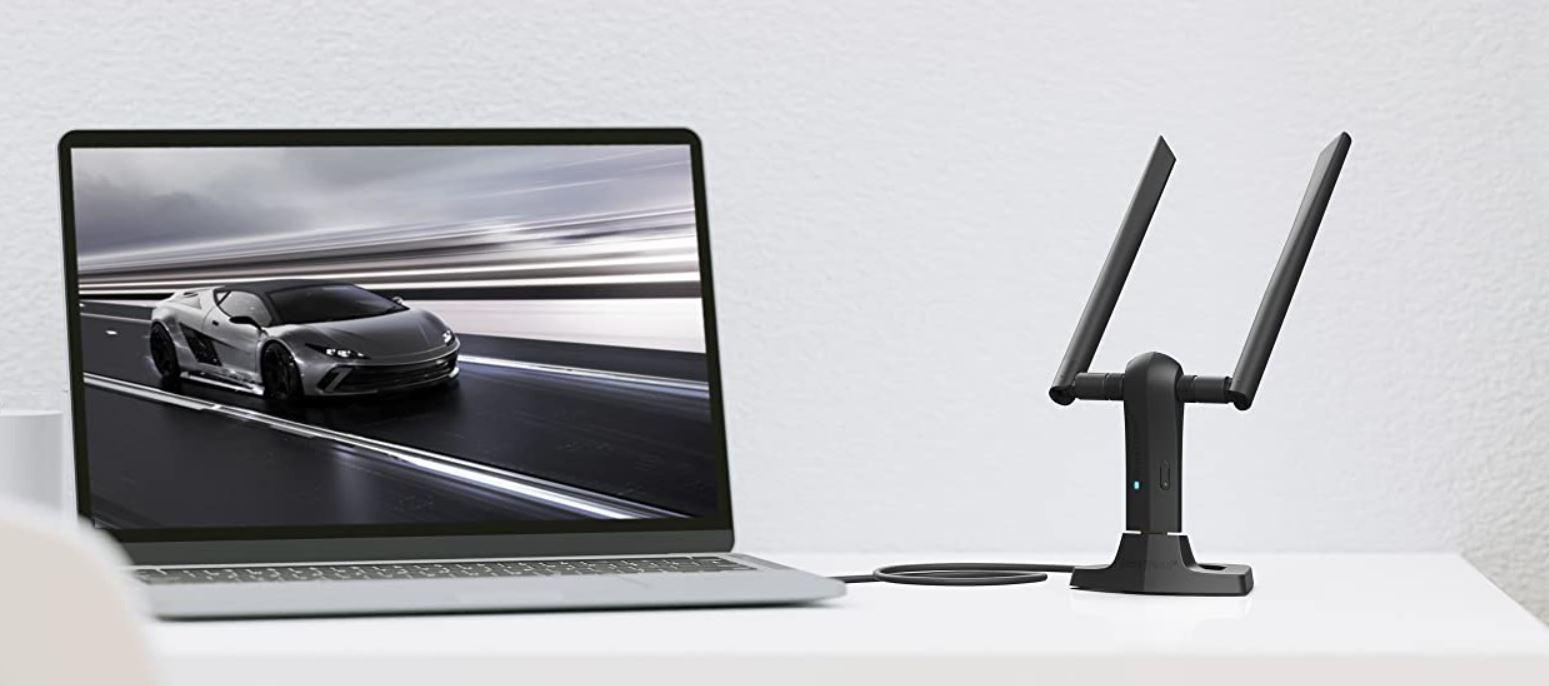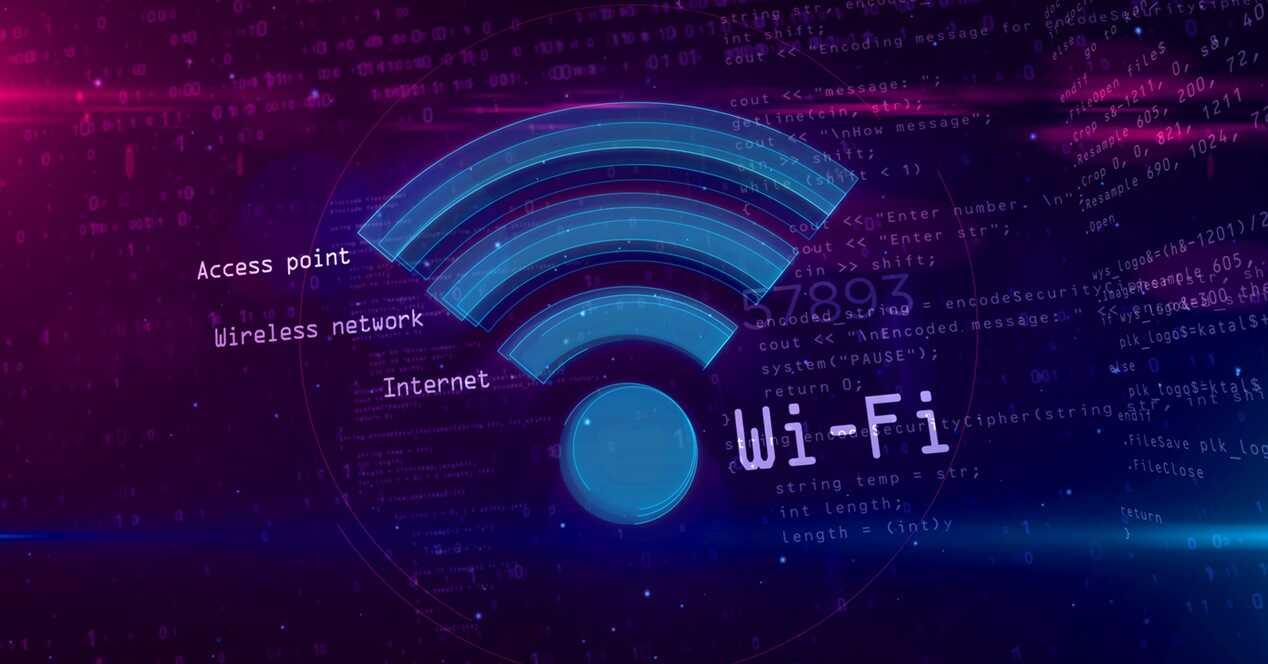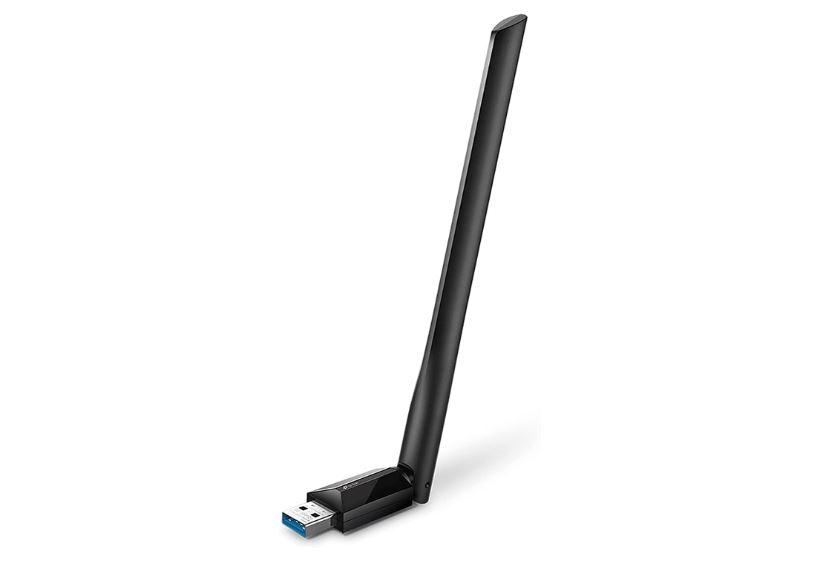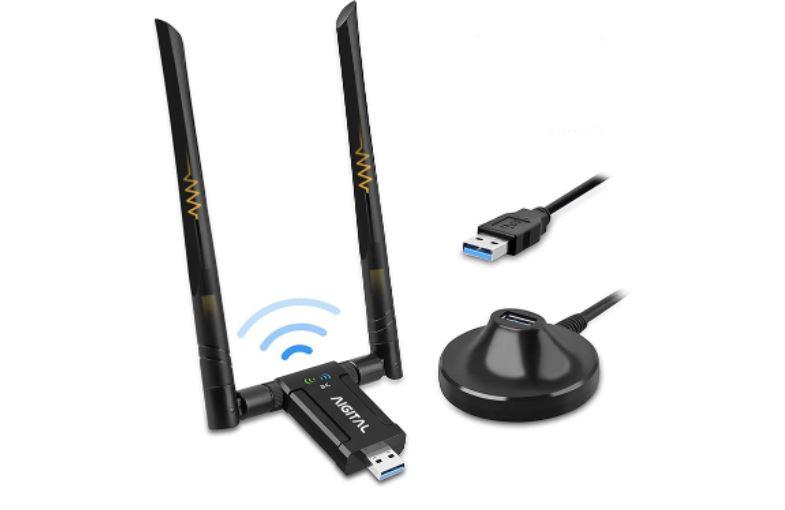USB WiFi antenna: what is it for and recommended models
If you want to improve the coverage of your computer, we can bet on systems such as repeaters or WiFi Mesh networks, but we can also use a USB WiFi antenna that allows us to connect to any nearby WiFi network, whether at home or outside it, through the laptop we can improve coverage to search for nearby wireless networks. But, what are USB WiFi antennas and what should we take into account when buying one? What models are recommended and for what?
In the next paragraphs we explain what we should take into account when buying a USB WiFi antenna or if you really should do it depending on the need you have or the uses you are going to give this device that promises to improve coverage but will also provide of compatibility with wireless networks to devices that do not have it, such as your Smart TV.
What is a USB WiFi antenna and uses
As its name suggests, a USB WiFi antenna is an antenna with a USB port that allows us to plug it into any device in order to connect to a nearby wireless network. For example, if you have a laptop and the signal does not arrive correctly, you can have an antenna connected to the device’s USB port so that it can better receive the signal from the router through it. It works in a similar way to a WiFi repeater but with the opposite function: what the antenna does is attract the signal from the wireless network so that it reaches your computer properly.
Its shape or design may vary but it is generally a USB port with an antenna that we connect to the computer or to another device, such as a Smart TV, and that works as a WiFi receiver to improve the signal that reaches us and avoid cuts or improve the speed with which we surf the Internet, for example.
You may want a USB WiFi antenna to improve the signal reaching your computer if you don’t want to use a WiFi repeater or booster or a WiFi Mesh network. But we must also take into account that there are USB WiFi adapters that have a pendrive format and whose mission is similar: what we do is provide a wireless connection to a device that does not have it. As you can do on your computer through a Bluetooth USB adapter if you want to connect a keyboard or headphones, for example, we can do the same with the WiFi connection of a device. What a WiFi USB stick allows is to connect any device to the Internet through the wireless signal , even if it does not have it by default.
What is it for? Frequent uses
The best use we can give to a USB WiFi antenna is, as we have explained in previous paragraphs, to improve the coverage of our computer if we are far from the router or if the distribution of our house means that it does not arrive correctly. Although it will always be more advisable or useful to bet on other systems such as WiFi repeaters or amplifiers or a WiFi Mesh system, for example, it can be an alternative to connect to the signal more easily.
Another option is that we want to use it outside the home, where we do not have “control” of WiFi coverage through improvements such as the previous ones. For example, if you take your computer to university but the coverage in your class or in the library is usually insufficient… Having this type of USB antenna will allow you to connect with better coverage from your laptop and without complications.
It can also be useful if you want to connect to open WiFi networks , which is not recommended for computer security if you do not use a VPN, and you want to be able to connect easily and have free Internet anywhere. Whether it is a hotel, a library, a coffee shop or on public transport such as trains, etc.
What to look for and which one to buy
There are a number of aspects that we should look at when choosing a USB WiFi antenna correctly, such as, for example, what technologies the device we just bought is compatible with. We must also take into account the generation of the USB port to which we are going to connect it, but also other relevant factors such as the quality of the antenna (because it is not bigger, it will be better) or the size or design depending on where we want to take it or connect it.
WiFi antenna TP-Link Archer T3U
If you are looking for a simple antenna, the TP-Link Archer T3U Plus model is a dual WiFi adapter with an adjustable external antenna compatible with Windows computers and computers with the MacOS operating system. It promises a speed of up to 867 Mbps in the 5 GHz band and up to 400 Mbps in the 2.4 GHz band, as well as other improvements or technologies such as MU-MIMO to manage the entire network…
It is small, compact and we simply have to connect it to a USB port with a user interface that promises to be very simple. In addition, it offers the WPA/WPA2 encryption standard that keeps wireless connections secure and is compatible with Windows in its versions of Windows 10, Windows 8.1 or Windows 8 and Windows 7 as well as computers running macOS.
USB Wi-Fi adapter for PC
With a different format from the previous one, here we do not have a USB WiFi antenna that connects automatically to the computer port, but rather we have the option of connecting it directly to the device’s USB port, but it also has a support that allows us to place it on the table or on any surface to get a long range. It is a USB 3.0 compatible with Windows in all its recent versions and also compatible with computers that work with macOS.
It allows you to use it for HD streaming without interruptions or for video games and promises up to 867 Mbps in the 5 GHz band or 300 Mbps in 2.4 GHz and has 65 centimeters of cable with a flexible design so we can connect it to the computer finding the best possible location for improve Internet coverage.
TP-LINK Archer T4U Plus
One of the best antennas that we can find on Amazon is this TP-LINK desktop model . A USB antenna that we can connect through the cable and that does not work as an antenna directly to the computer port but with a cable that allows us to place it anywhere to achieve the best coverage. We can rotate and adjust the antennas at different angles to favor better reception and it is compatible with Windows 10, Windows 8.1, Windows 8, Windows 7 computers and with computers with the macOS operating system.
With a high-speed USB 3.0 port and Dual Band Wi-Fi, it is not a USB Wi-Fi antenna but rather has two dual gain dual antennas with promised speeds of 1,300 mBps and with support for the 802.11ac Wi-Fi standard. In addition, it is an antenna with quick configuration and advanced security, compatible with WPA/WPA2 encryption standards to protect the wireless connection.
USB Wi-Fi Adapter 101
USB Wi-Fi adapters can be categorized based on their antennas, which can be omnidirectional (transmitting and receiving in all directions) or directional (focusing the transmission in only one direction). The strength of an antenna gets expressed in decibels (dB) relative to a standard reference antenna. Because this standard reference antenna is isotropic, that metric gets expressed as dBi, meaning decibels relative to the isotropic antenna. While this spec is not consistently available for USB Wi-Fi adapters, in cases when it is, this allows a more direct comparison of the expected signal strength for the adapter.
One differentiating factor of USB adapters is an external antenna, or a slimmer profile with an internal antenna. Both have their advantages, disadvantages and applications.
In situations where the signal strength is less than optimal, whether due to router location, interfering obstacles like walls and/or floors, and when there are multiple Wi-Fi networks nearby, a USB-based Wi-Fi adapter with an external antenna is preferred. Also, in the situation where a 5GHz signal is chosen for the Wi-Fi connection, but it is not strong, an adapter with an external antenna can make it usable (keeping in mind that 5GHz penetrates obstacles like walls or floors less than 2.4GHz). An adapter with an external antenna that can be adjusted and positioned to optimize signal strength is particularly ideal for these situations.
While an adapter with an external antenna is ideal from the standpoint of signal strength, they also tend to be bulky and protrude from the USB port. While less of an issue with a desktop, this can be a particular problem in a notebook, especially when they can get hit, and the USB port potentially damaged. In situations where the signal strength is strong, a smaller USB Wi-Fi adapter with an internal antenna and slim profile becomes the preferred choice.
In the never-ending quest for tiny electronics, a class of USB Wi-Fi adapters has emerged that can be described as “nano,” with the adapter only slightly larger than the USB port itself. While devices like this can certainly offer performance in a smaller package, keep in mind that a strong signal from a router is necessary for such a device to maintain a fast connection.
Current page: External Versus Internal Antenna
Stay on the Cutting Edge
Join the experts who read Tom’s Hardware for the inside track on enthusiast PC tech news — and have for over 25 years. We’ll send breaking news and in-depth reviews of CPUs, GPUs, AI, maker hardware and more straight to your inbox.
By submitting your information you agree to the Terms & Conditions and Privacy Policy and are aged 16 or over.
Jonas P. DeMuro is a freelance reviewer covering wireless networking hardware.
U.S. to Invest $42 Billion in Universal Internet Access
Netgear’s Pricey M6 Pro Unlocked Mobile Router Adds Wi-Fi 6E, 5G mmWave
Prime Day 2023 Deals Live: Latest SSD, CPU, GPU and PC Sales
I got this far, then tuned out. okay, I see you don’t get what the intended audience in this article is. i’ll re-word that for you: «a multimedia family / office work computer needs to be connected to its network. «
USB extension cables are often causing problems. I’d never extend a cable by more than one meter and make sure it is a very high quality cable or the voltage will lower dramatically causing the device not to work properly anymore. Or you have to get yourself an active USB expander which is usually quite a bit more expensiv.
On the other hand, antenna cables are even worse to extend.
You think you need USB3 to drive a 802.11ac network adapter at full speed? Please. You couldn’t have been more confused. Let’s say we’re talking about a two stream AC device, so theoretically it’s capable of 867mbps throughput in 5GHz band. However, much of that number pertains to the «physical layer» information transfer, the chatter that ensures that your data is transferred accurately, under optimal condition (e.g. 6 ft from the router). At TCP/IP level, the throughput will be much lower, even if the distance is short, somewhere in the neighborhood of 100-300mbps, depending on your luck. In other words, a lot less than USB2 can handle.
You see, the wireless data transfer rates are basically a big marketing scam because half of more of that data transfer rate will disappear due to weakening signal with distance or on the physical layer chatter. Wireless is not like wired Ethernet, where saying 100Mbps really means that you will actually see TCP/IP data transferred nearly at that rate. In the wi-fi world, the marketing can say they sell you a «gigabit ac1750 router (or adapter)», and in real life you may well end up with just 100Mbps or slower data throughput. If you get 200mbps or more, you should be jumping from joy.
I’m using a dual band PCI Express wi-fi module. For some reason, it’s much better than my ethernet connection. Could be because my killer port is only single band rather than dual. I’ve not lagged one bit with this accessory and I’ve been using it for at least 8 — 9 months now.
Id like to point out that having an external usb wifi can get really hot and malfunction. Its not inside of an air circulated case, so mine tends to get blazingly hot. i have the n600 which i can game on and have no problems. Moslty
